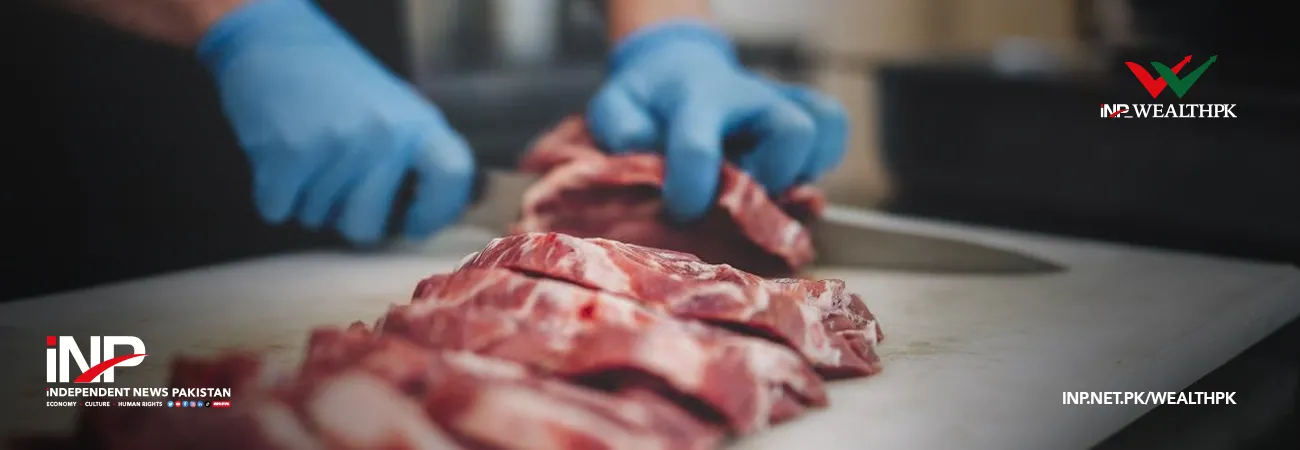INP-WealthPk
By Muhammad Soban
ISLAMABAD, August 22 (INP-WealthPK): Pakistan's economy continues to recover in the ongoing fiscal year (FY-22-23) after large-scale manufacturing (LSM) exhibited broad-based expansion, reports WealthPK.
According to the half-year performance report issued by the State Bank of Pakistan on Friday, August 12, exports increased in tandem with an increase in FBR taxes, and Kharif crops produced more.
According to the SBP, 16 of 22 LSM sectors saw increased output in H1-FY22, thus contributing to LSM growth. However, an increase of 9.7 percent in Q1FY22 outweighed a relatively moderate growth of 5.5 percent in Q2.
In the agriculture sector, output in the Kharif season was primarily driven by record production in rice and sugarcane crops. Cotton production also increased over last year mainly due to favourable weather conditions.
In H1-FY22, credit to the private sector nearly quadrupled. The working capital requirements increased during H1FY22 due to increased domestic demand, higher exports, and increased global commodity prices resulting in a jump in domestic wholesale prices.
Economic growth was also evident in demand for loans for fixed investments and consumer financing, although the latter experienced a policy-induced slowdown in the second quarter.
According to the SBP, in H1-FY22, despite double-digit growth in workers' remittances to $15.8 billion, soaring global commodity prices contributed to the widening of the current account deficit.
There was considerable growth in exports in the first half, despite some deceleration in the second quarter. In H1-FY22, higher unit prices and export volumes boosted exports by $3.4 billion year-over-year to $15.2 billion — the highest half-yearly export volume ever.
However, despite a slightly slower pace of import growth in the second quarter, imports increased nearly four times faster than exports during H1-FY22. Apart from the rise in global commodity prices, the report noted that the rising demand for raw materials and capital goods, Covid-19 vaccine procurement, and the need to import wheat and sugar to plug domestic supply gaps led to import growth.
H1-FY22 saw the market-determined exchange rate depreciate by 10.7 percent amid a widening current account deficit. Despite this, the SBP's foreign exchange reserves remained relatively stable until H1-FY22, boosted by 1 billion dollars inflows from Eurobond issuance, 2.8 billion dollars additional SDR allocation from the IMF in Q1, and 3 billion dollars in bilateral deposits from Saudi Arabia.
Due to confluence of imported commodities (such as edible oil and pulses) and some demand-side pressures during H1-FY22, national CPI inflation soared into double digits, as a spike in non-perishable food prices more than offset a decrease in perishable food prices. Additionally, petrol, LPG, and electricity prices were adjusted upward due to the increase in global commodity prices.
The report said a cumulative increase of 275 basis points in the policy rate was necessary during H1-FY22 due to the strength of the economy, inflationary pressures, and the widening current account deficit. These efforts were made to anchor inflation expectations and ensure sustainability of economic growth and external accounts.
Moreover, additional measures were taken to moderate demand pressures, such as increasing cash reserve requirements and tightening prudential regulations.
Reports suggest that last year's overall fiscal deficit remained unchanged at 2.1 percent of GDP. In H1-FY22, the primary balance narrowed from 0.6 percent to 0.1 percent of GDP, as non-interest expenditures outpaced tax revenues.
Credit: Independent News Pakistan-WealthPk













